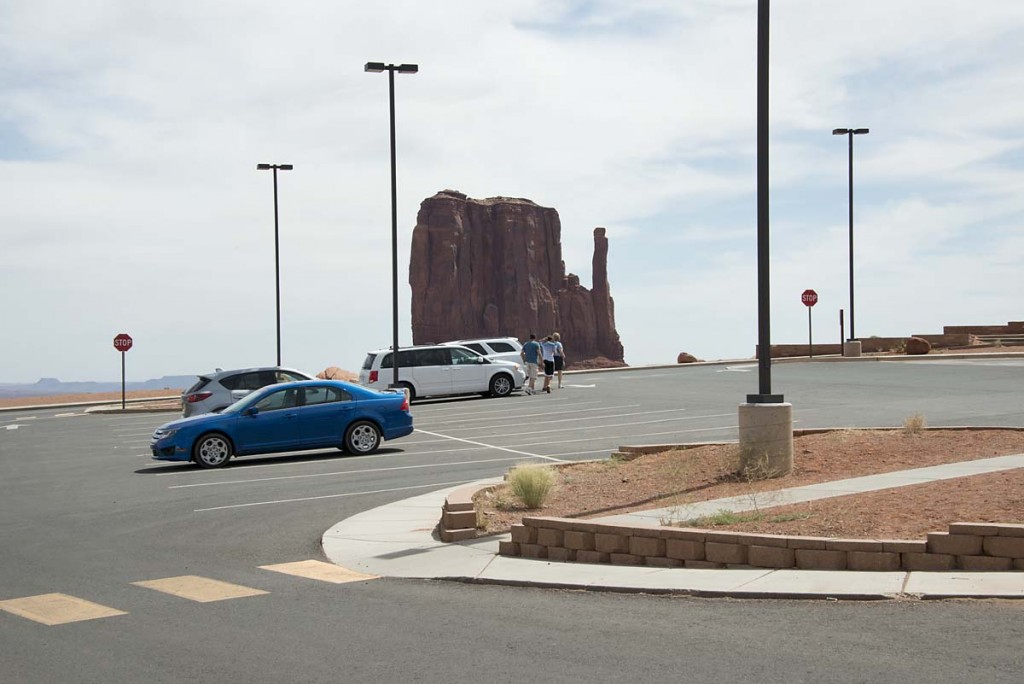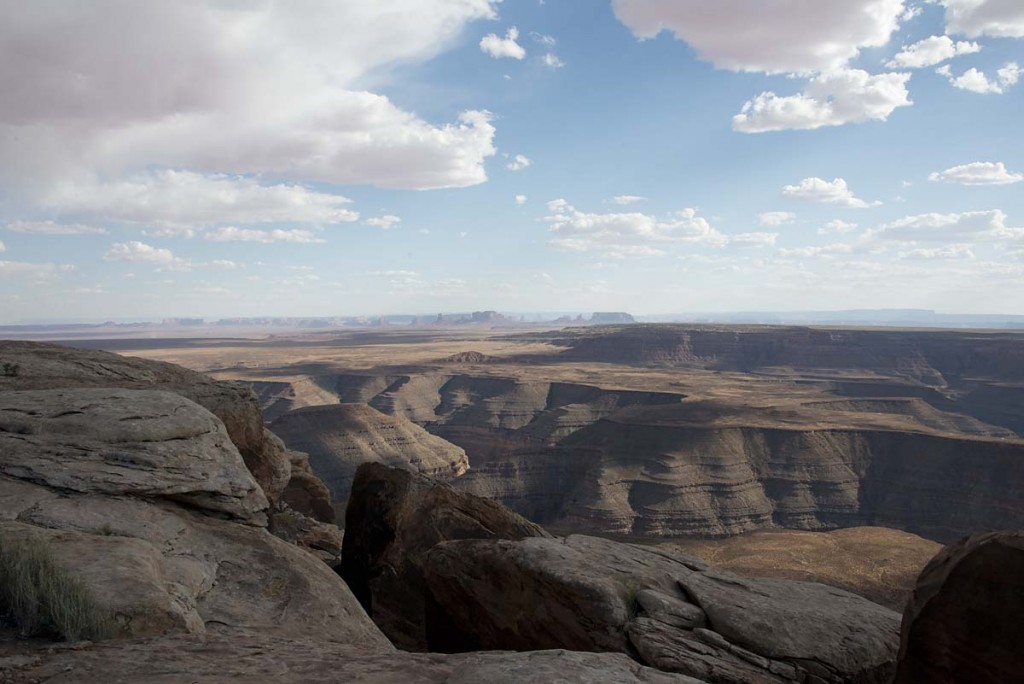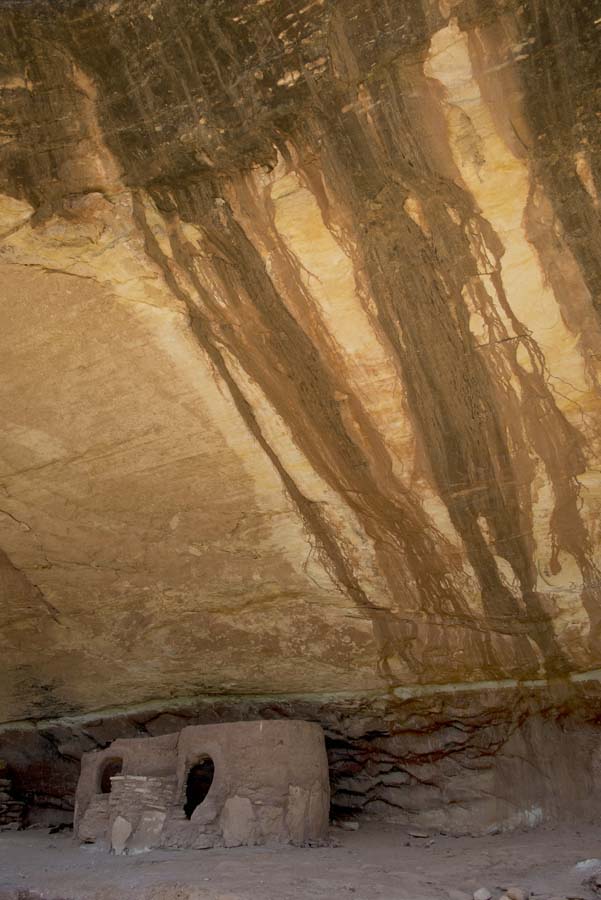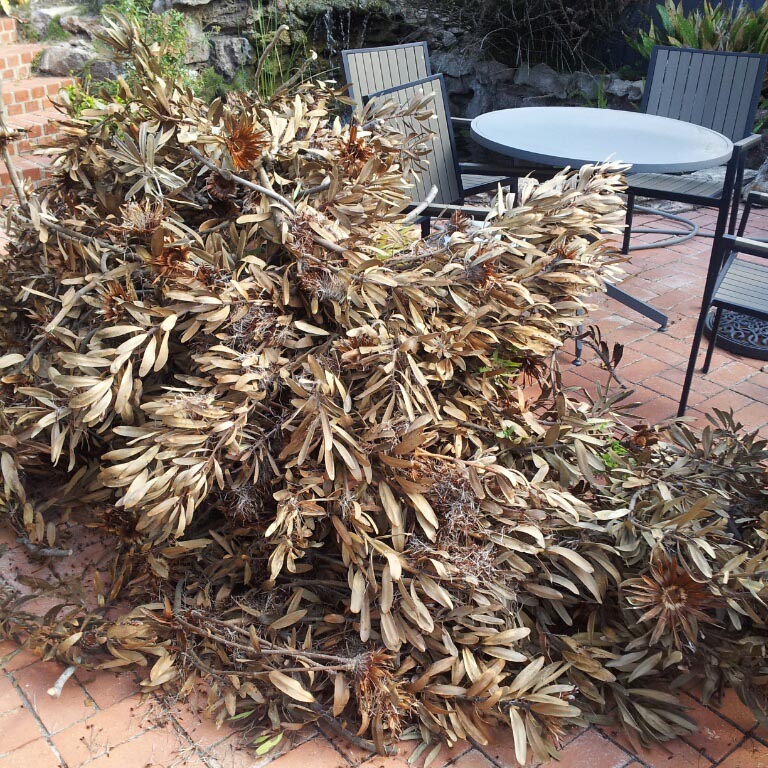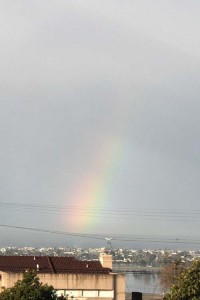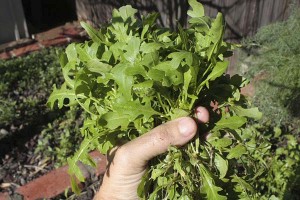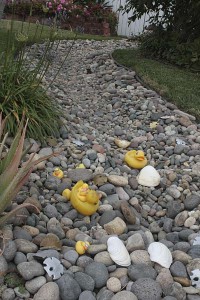Water restrictions went into effect here in San Diego on June 1. So far there’s a short list of thou-shalt-nots, and the water district has primarily targeted landscape irrigation, the low-hanging fruit, with directives like: no watering between 10 a.m. and 6 p.m., watering only on specified days based on your address, sprinkler-watering limited to no more than 10 minutes, three times a week.
Walking around my neighborhood I can see a lot of people who’ve responded to the call. Some are just beginning to make changes, while others made changes years ago.

I was down a couple streets from my house when I saw this front yard makeover. Simple. Just a few big plants chosen for their countours. This is a house where the modern lines of the house echo the style of the plantings. The sago palm requires some water, but the other plants would do well going dry.
Walking around I saw a number of houses where more drought-tolerant plantings were making their way into the landscape. Each house seemed to have their own take on what a drought-tolerant front yard could look like.
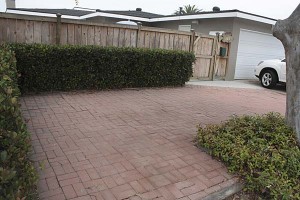
Some relied on hardscape to replace a lawn…
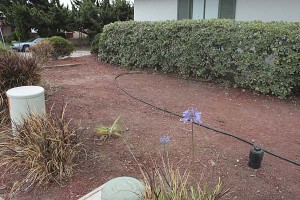
…some went in for lots of mulch instead of a lawn, but not many plants…

…some for mulch with some plants, drought-tolerant or not…
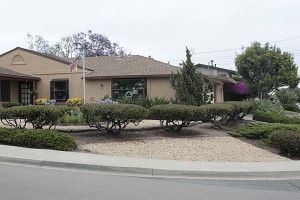
…many of the yards that were reimagined as dry landscapes many years ago seemed to rely on gravel and some plants…

…several used gravel with just a few plants to image a desert theme…
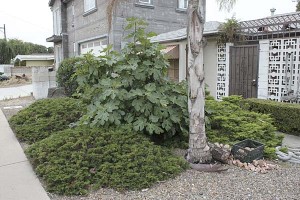
…this one mixed gravel, junipers, and edible landscaping–a fig–right out front…
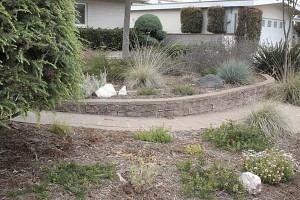
…many used what I’d consider a contemporary look, employing widely-spaced drought tolerant combining natives or exotics set in mulch or DG…

…here’s another of the style where a few plants are set in the middle of space they’ll never grow into. It’s definitely a look, as well as landscaping that embraces the fact that things don’t need to be densely planted to look good…
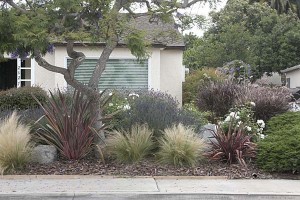
…many yards feature some more water-intensive plants mixed in with ones that require a lot of water, a kind of planting that a drip irrigation system can make possible. These people used some roses along with plants that’ll look good with less water.
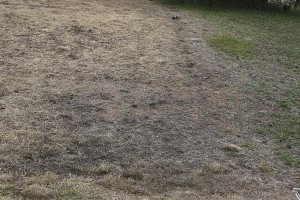
Looking around you sense that this is a neighborhood in transition. Some people are just letting their lawns go brown. Some may be planning on redoing their plantings. Others are probably just waiting out the water restrictions to go back to their old ways.

Some houses are still attached to their old ways that feature conspicuous water consumption. Maybe at some point its was a status thing, showing everyone that you could spend resources on something that can’t be used. But these days it’s hard not to feel a little hot under the collar when these are resources that are being taken from the rest of us.
Still, before I get overly tough on the neighbors, I want to give people the benefit of the doubt for a while. These are tough economic times. Redoing your landscaping can be an expensive proposition. And there are people for whom dealing with a sprinkler timer would be like asking them to pilot the Space Shuttle. (My father could never figure out his timer.) And there’s a chance that people haven’t heard about the new restrictions.

But there’s one water-user that I’ll call out on the carpet. This is our local shopping center, which presumably is maintained by people who know what they’re doing. But watering the sidewalk and the asphalt…
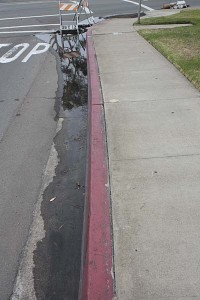
…and then letting all the water run off into the storm drains, well, that does get my goat. But it’s not like I’m only grousing on a blog they’ll probably never read. They’ve heard from me already, and I hope they’ll get in step with the neighborhood they serve.
But overall I’m pleased. People are getting the message and they’re doing something about it. I think they get a sense that we’re all in this together, and we’ll find ways to deal with this water crisis. Not living in a neighborhood ruled by a homeowner’s association, you can see that we’re all finding different solutions.
Some choices will be better than others from the standpoint of water use, habitat, urban runoff or reducing the heat island effect. Still, it’s encouraging to see people people waking up from this fantasy of a lush, green, subtropical California of endless water resources.

